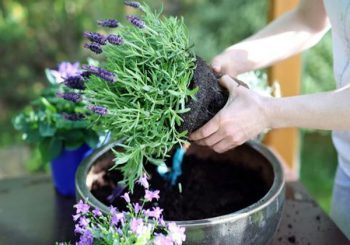 By Mia Barnes
By Mia Barnes
Guest Writer for Wake Up World
Do you want to improve your mental health? Why not get outside and dig in the earth? Gardening has significant benefits that extend beyond temporarily taking your mind off your troubles — although that is one plus.
If you haven’t gardened before, maybe you hesitate because you don’t know what to do. Have no fear — whether you dwell in a tiny urban apartment or have an entire back 40 to hoe, this guide can help you. Here’s how to begin your healing journey of growing things.
[pro_ad_display_adzone id=”110028″]
Collect Colorful Containers
No matter what size of home you have, you can grow gardens indoors and out with colorful containers. Some can get quite pricey, but you can typically find inexpensive models. If you love nothing more on a sunny Saturday than scouring the roadways for yard sale bargains, you are in luck. Estate sales, likewise, offer potential deals.
Tomatoes, peas and squash grow well in containers, so don’t think you have to resign yourself to florals. You might save considerable cash by going the veggie and fruit route. Instead of buying baby plants, you can save the seeds from the produce you buy, dry them out and spout them on a windowsill. Egg cartons work well for this purpose, and you can transfer them when they mature.
Container gardens improve your mental health by connecting you with the natural world. They get you outdoors and allow your body to produce natural stores of vitamin D.
Develop Your Repurposing Game
Do you have a yard at your home? If so, you have a lot more room to plant, but building supplies like pavers and garden stones don’t come cheap. If your financial situation is a bit tight, or you want to be eco-friendly, look into repurposing frequently discarded items for use in your garden.
No, you don’t have to turn a toilet into a planter if that doesn’t suit your tastes. However, you can paint an old truck tire a festive hue to make a circular planting spot for a small fruit tree and some annuals. An old toy dump truck makes a playful place to park your petunias, and a chandelier looks stunning with spicy oregano trailing over the sides.
Take a walk around the perimeter of your home. Do you see any unattractive spots you want to camouflage? How can you do so creatively with plants? If you can’t stand the appearance of your water meter, a folding room divider covered with planters keeps it accessible to maintenance workers while concealing the street view.
Beautifying your property decreases your stress level. Instead of sighing when you pull in your driveway, you smile at the lovely environment you’ve created.
Go Vertical
Is your space so tiny that even your balcony leaves little room for anything except two chairs? What about your available wall space? Vertical gardens offer another indoor-outdoor space-saving solution, and if you use recycled materials such as plastic bottles to make it, you save money, too.
You can fill old paint pots with dirt and hang them or prop an old wooden ladder in a corner to hold small containers. Your local lumber store may give away old wood pallets for free. You can take these home, paint them to match any decor, and mount them on the wall to make a secure frame for trailing herbs.
Even small gardens improve your overall fitness. You still need to water and tend your plants, which gets you off the couch. Plus, planting healing varieties like chamomile enables you to make teas that further benefit your mood.
Make It a Community Affair
What if you dream of a large plot, but you only have a tiny backyard? Do you have neighbors who also show interest in gardening? If so, why not circulate a petition or hang up signs announcing a community garden committee meeting?
Once you gather a group of like-minded individuals, you need to manage the legal requirements by reaching out to your local governing board. Don’t approach this process from an adversarial perspective. They might have suggestions about the location or the type of plants that will grow well in your zone.
After you win approval, you’ll get down to the dirty and fun part — building and planting your garden. You can organize your community plot in several ways. Each family can tend individual areas or assign a rotating schedule for raking, weeding and other maintenance tasks.
This project will help you feel more connected with those around you. Nearly three out of five adults suffer from loneliness, which can lead to depression.
Create a Zenlike Retreat
Do you enjoy practicing yoga, meditation or both? Wouldn’t you love a gorgeous, spa-like setting in which to enjoy your hobby? Rocks and sand feature prominently in many zen garden designs, meaning you can make your retreat as low maintenance as you like.
Bamboo makes an ideal privacy fence, and it grows in containers. You can line the perimeter of your patio with it if you live in an urban setting and don’t want passersby intruding on your solitude. You can complete the effect by adding a DIY bamboo water feature that will make you think you’re sitting in lotus pose beneath Mt. Fuji’s shade.
With this garden design, you’ll want plenty of colorful flowers. If you want to save money, pick perennials — they cost more initially but come back year after year. You’ll also need a comfortable place to sit. If you’re on a patio, add ample carpeting and pillows for cushioning. If you locate yours elsewhere in your yard, consider building a small deck or gazebo.
You can’t overstate the value of having a beautiful location for your practice. You’ll experience a sense of calm before you chant your first “om.”
Gardening connects you with the natural world and takes your mind off your troubles. It also improves your mental and physical well-being — why not begin a healing planting journey today?
About the author:
Mia Barnes is an online journalist and Editor in Chief at Body + Mind.
[pro_ad_display_adzone id=”110027″]







